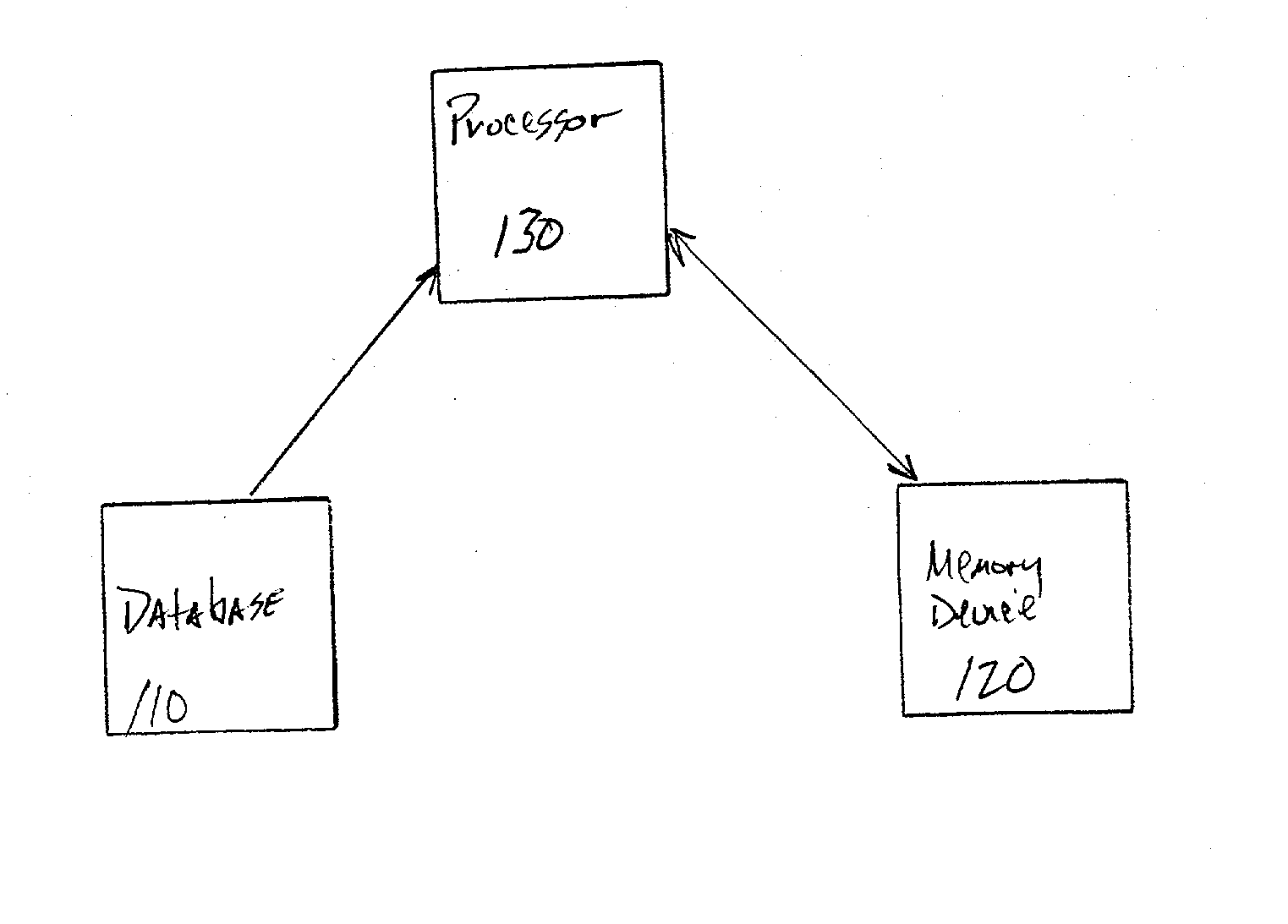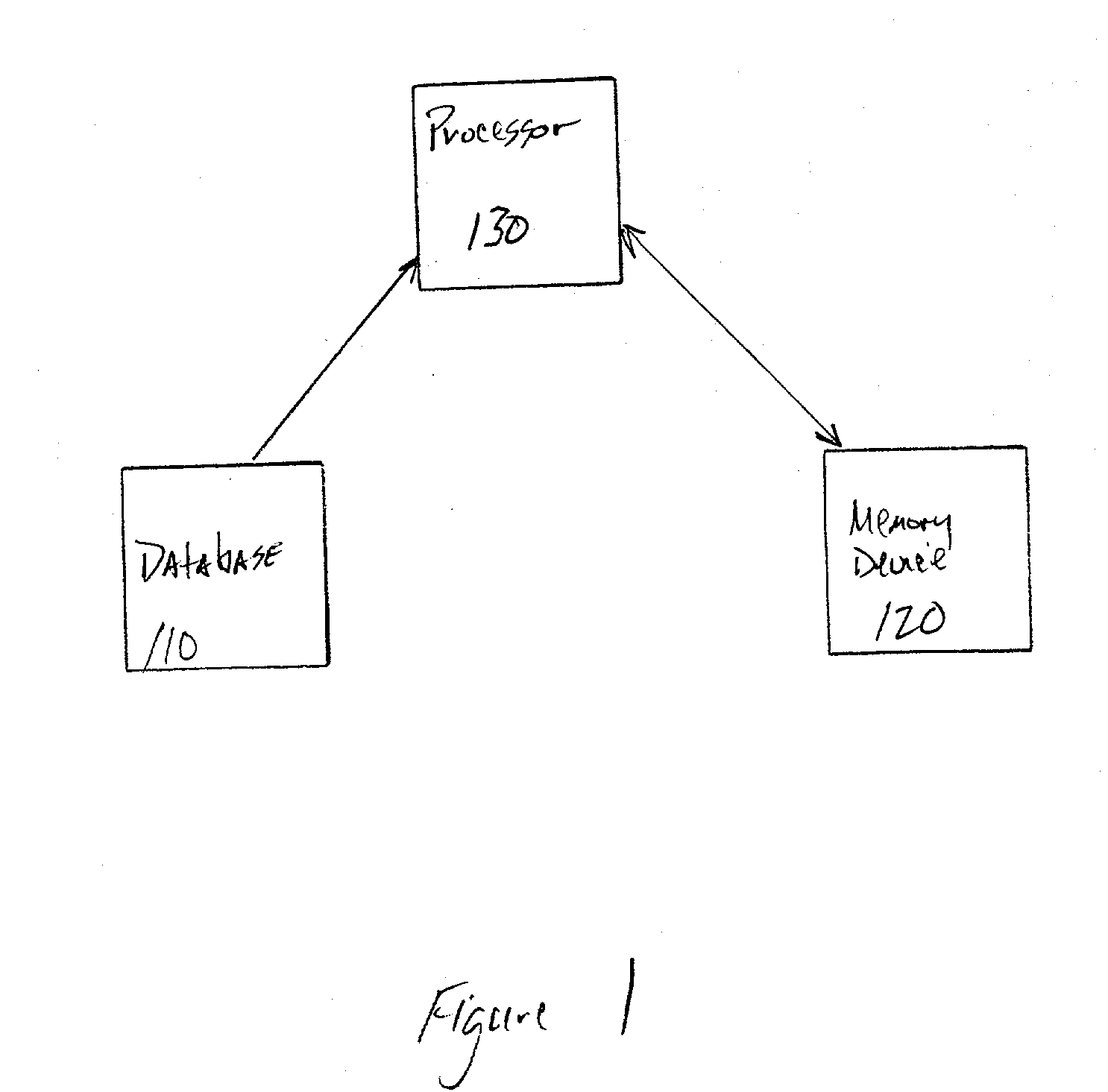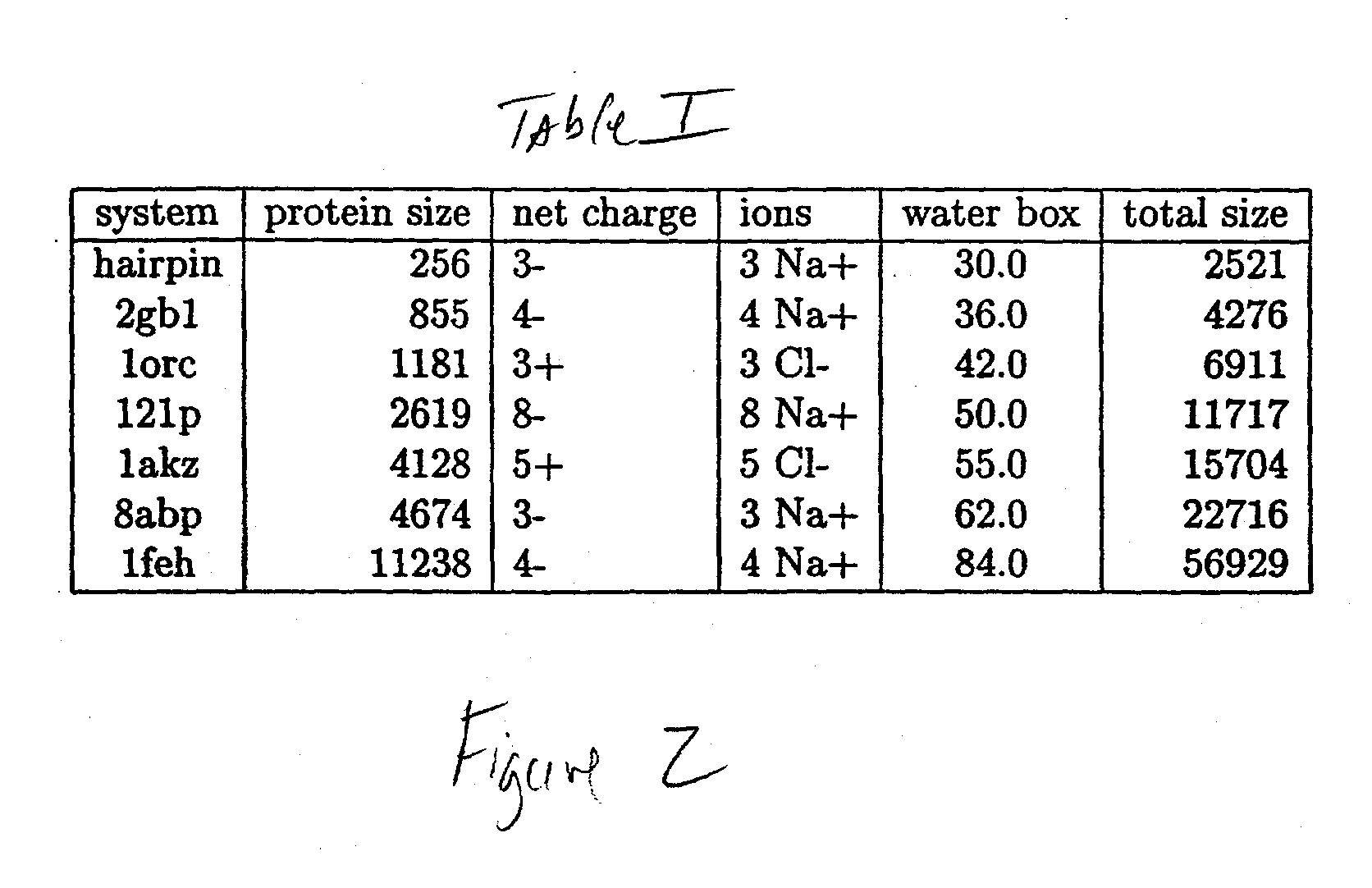System and method for molecular dynamic simulation
a dynamic simulation and molecular technology, applied in the field of system and method for molecular dynamic simulation, can solve the problems of computationally intensive simulation, computational bottlenecks, and the dynamics of such systems usually have multiple time scales
- Summary
- Abstract
- Description
- Claims
- Application Information
AI Technical Summary
Problems solved by technology
Method used
Image
Examples
Embodiment Construction
[0047] Referring now to the drawings, FIG. 1 illustrates an inventive system 100 for molecular dynamic (MD) simulation.
[0048] In the inventive system 100, the particle-particle particle-mesh (P3M) method for calculating long-range electrostatic forces in molecular simulations may be modified and combined with the reversible reference system propagat or algorithm (RESPA) for treating the multiple time scale problems in the molecular dynamics of biomolecular systems (e.g., complex systems) with multiple time scales and long-range forces. The inventive system 100 (e.g., particle-particle particle-mesh Ewald RESPA (P3ME / RESPA)) provides a fast and accurate representation of the long-range electrostatic interactions for biomolecular systems such as protein solutions.
[0049] Specifically, the inventive system 100 uses a different breakup of the electrostatic forces than was used by conventional systems which combined the Particle Mesh Ewald method with RESPA. The breakup in conventional sy...
PUM
 Login to View More
Login to View More Abstract
Description
Claims
Application Information
 Login to View More
Login to View More - R&D
- Intellectual Property
- Life Sciences
- Materials
- Tech Scout
- Unparalleled Data Quality
- Higher Quality Content
- 60% Fewer Hallucinations
Browse by: Latest US Patents, China's latest patents, Technical Efficacy Thesaurus, Application Domain, Technology Topic, Popular Technical Reports.
© 2025 PatSnap. All rights reserved.Legal|Privacy policy|Modern Slavery Act Transparency Statement|Sitemap|About US| Contact US: help@patsnap.com



